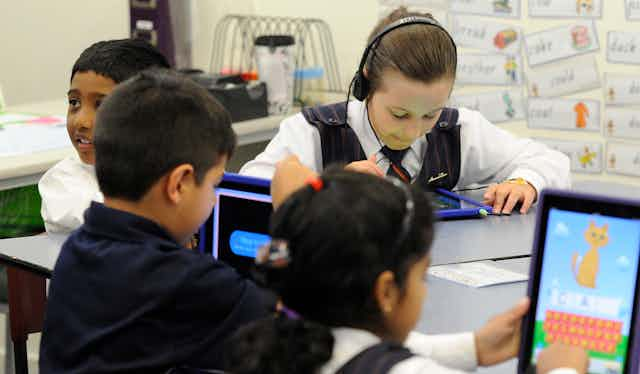Since the 2008 “Digital Education Revolution”, when the government funded laptops for secondary school students, there has been a growing impetus to increase young people’s screen time both in school and for homework at home.
Now that the government funding has ceased, schools are moving toward “Bring Your Own Device” policies so that students can continue to benefit from educative uses of modern computing devices.
Continuing to advance our students’ IT skills is an educational priority. IT skills are one of the key “General Capabilities” in the national curriculum and also appear in the content descriptions for specific subjects. In recent times there has been increasing interest in international comparisons through tests such as the International Computer and Information Literacy Study.
It is likely that school-provided or self-provided device programs greatly increase students’ screen time both at school and at home. This is problematic. At the same time, parents are urged to monitor their adolescents’ screen use in line with Department of Health guidelines due to the potential health risks that can result from heavy usage.
Heavy screen use has been associated with a range of health issues, such as obesity, spinal issues, ocular health problems and sleep disruption.

Mental health may be affected, and increasing access to devices may also lead to increased opportunities for cyberbullying. Around three-quarters of secondary students already exceed the recommended two-hour limit on daily screen time.
What makes the situation even more confusing for adults is that Australian guidelines as outlined by the CSIRO are specific to screen time for entertainment purposes only.
Thus a child who spends five hours on their device at school, followed by three hours of homework on their device, would not be exceeding the guidelines unless he or she then spent more than two hours in front of the screen for recreational purposes.
For adults moving into a new job involving regular screen time, induction usually involves consideration of occupational health and safety around heavy screen use, with guidance that repetitive computer tasks be undertaken for short periods and with regular breaks. We need to offer the same level of support for young people as we increase their screen time in the school environment.
We need to quantify the impact that increasing device use for educational purposes has had on students’ overall screen time. The Australian guidelines should be adjusted to include screen time for educational purposes.
We need to determine whether or not schools do enough to support students to mitigate the potential risks of increased screen usage, and if students and their parents are aware of the risks of heavy screen usage.
This is from a forthcoming paper ‘Bring Your Own Device: Considering potential risks to student health’ from the Health Education Journal.

